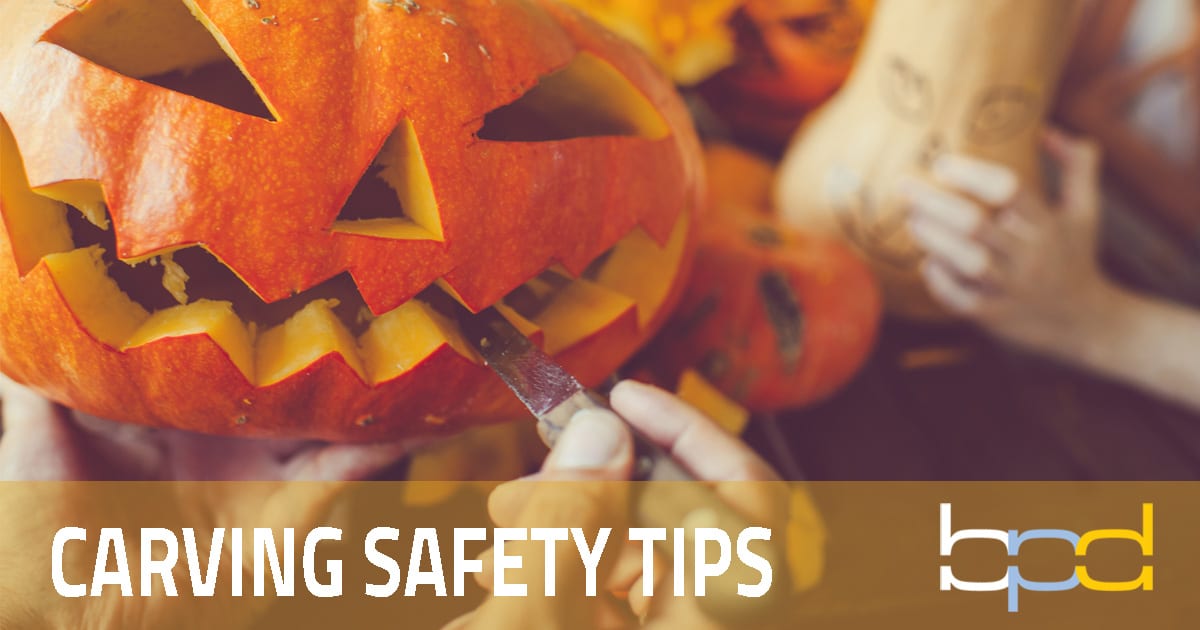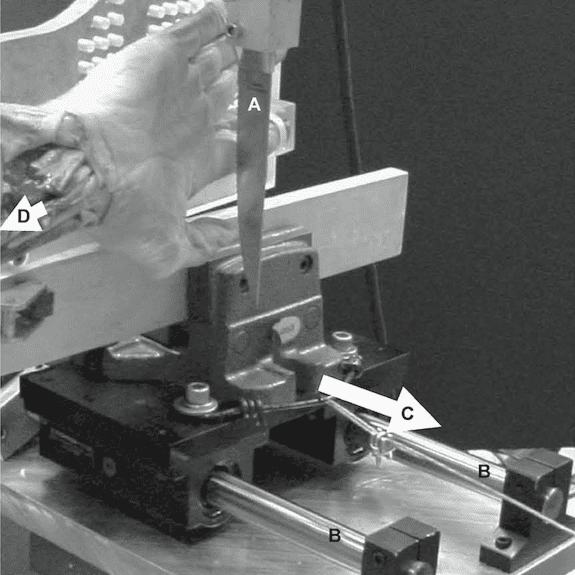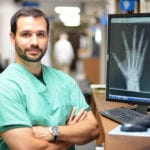
With Halloween right around the corner, many last minute revelers will be in a big rush to carve a pumpkin into the perfect jack o'lantern. In today's blog post hand, wrist and elbow specialist Dr. Brandon P. Donnelly, MD encourages everyone to slow down and follow a few simple pumpkin carving hand safety tips.
“The most common injury I see related to pumpkin carving is a laceration or cut to the hand,” said Dr. Donnelly. “This usually happens when the thick pumpkin skin causes the knife to get stuck. Using increased pressure can cause the hand to slip, or the knife to pierce through the pumpkin and into the palm. While painful, most of these incidents involve simple skin lacerations. However, it is possible to injure deeper structures, like the nerves and tendons."
Testing pumpkin carving hand safety...with a real hand!?
Yes. That is a real, human hand. A team from SUNY Upstate Medical University in Syracuse decided to rigorously investigate the potential risks of pumpkin carving using cadaver hands. In a study reported in Smithsonian Magazine, the researchers compared the threats posed by conventional kitchen knives versus tools specifically designed for carving pumpkins. They compared kitchen knives and two brands of pumpkin carving tools. Each was placed in the grip of a hydraulic press and the force needed to pierce into a pumpkin and six human hands was measured.

The pumpkin carving kits cut into the pumpkins more easily than the kitchen knives. The study showed when less force is needed to actually cut the pumpkin, the risk of accidentally cutting yourself is lower. The researchers’ conclusions showed tools designed specifically for pumpkin carving may indeed be safer. Use of these products and increased pumpkin carving hand safety can reduce the frequency and severity of pumpkin carving injuries.
4 Pumpkin Carving Hand Safety Tips
The American Society for Surgery of the Hand urges caution during the Halloween season, and to follow these steps to prevent hand injuries when carving your pumpkin:
CARVE IN A CLEAN, DRY, WELL-LIT AREA
Use only clean, dry carving tools, knives, and cutting surfaces. Always work with dry hands.
LEAVE THE CARVING TO THE ADULTS
Do not allow children to use sharp knives or carving tools. It only takes one slip to cause a serious injury.
SHARPER IS NOT BETTER
Hand injuries often happen when a sharp knife comes out the other side of the pumpkin and into the hand holding it steady.
USE A PUMPKIN CARVING KIT
The serrated pumpkin saws work better because they are less likely to get stuck in the thick pumpkin tissue and are not sharp enough to cause a deep cut.
"While painful, most pumpkin carving incidents involve simple skin lacerations. However, it is possible to injure deeper structures, like the nerves and tendons."Brandon P. Donnelly, MD
What to do if you injure your hand?
“If you happen to cut yourself, clean the area with soap and water and hold pressure to control bleeding,” said Donnelly. “If holding pressure for more than 5 minutes does not stop the bleeding you may need to seek urgent medical attention.”
With penetrating injuries the size of the cut does not always determine extent of injury. If you have loss of sensation, numbness or altered feeling to a finger after cutting your finger, or if you have impaired motion of the finger you should see a hand surgeon for evaluation.
We hope you and your family follow these simple pumpkin carving hand safety tips. However, if you experience a serious hand injury schedule an appointment with Dr. Donnelly today.
About Dr. Brandon P. Donnelly, MD
 Dr. Brandon P. Donnelly is a native of Slidell, LA. He is a board certified orthopedic surgeon with Pontchartrain Orthopedics & Sports Medicine who treats all ages of patients in the Greater New Orleans Area. Dr. Donnelly is active in the medical community by giving lectures at several orthopedic conferences in the Metairie and New Orleans area.
Dr. Brandon P. Donnelly is a native of Slidell, LA. He is a board certified orthopedic surgeon with Pontchartrain Orthopedics & Sports Medicine who treats all ages of patients in the Greater New Orleans Area. Dr. Donnelly is active in the medical community by giving lectures at several orthopedic conferences in the Metairie and New Orleans area.
This site is not intended to and does not provide medical advice, professional diagnosis, opinion, treatment or services to you or to any other individual. Through this website and links to other websites, Brandon P. Donnelly, MD provides general information for educational purposes only. The content provided in this website and links, is not a substitute for medical care or treatment. You should not use this information in place of a consultation or the advice of your healthcare provider. Brandon P. Donnelly, MD is not liable or responsible for any advice, course of treatment, diagnosis or any other information, services or product you obtain through this site.

